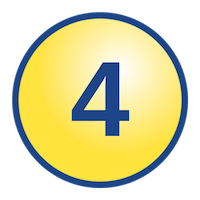Five Reflections on the DLL Learning Experience during COVID-19
The COVID-19 pandemic has added many complications to the learning landscape for students of all ages. But for Dual Language Learners (DLLs)–children, birth to five, who come from homes where a language other than English is spoken–the current experience makes learning even more difficult than it was for them before. Out of the health crisis, new challenges have arisen for these children, their families, and the Early Learning teachers who support them.
Early Edge California reflects on what we have learned about the DLL learning experience during COVID-19 and the critical support these young children need in order to lay the foundation for future academic success.

Language barriers impact distance learning. For DLL families, language barriers can make it difficult to access information and engage in learning successfully. Many of the current resources are not in families’ home languages, so it is much harder to implement learning at home. Resources need to be available in DLL families’ primary language.

The digital divide for DLLs is vast. While many materials are currently being produced on digital platforms for teachers and parents to incorporate as learning strategies with young children, many DLL families lack access to technology devices or the internet, leaving them at a disadvantage. Providing hard copy materials in DLL families’ primary language when possible (such as learning packets) can help bridge this divide.

Distance learning lacks meaningful and individualized interaction. DLLs benefit greatly from high-quality programs and interacting with their teachers in the classroom. Now, they do not have access to this type of learning. Programs and providers need support in creating innovative solutions for how best to connect with DLLs through learning at home.

Learning resources can be complicated. Providing links to resources can be overwhelming for families, especially if they do not know the language. What works best for DLL families: when programs and providers are intentional about sharing a select collection of resources and guide parents on how to use them.

DLL children need support in both English and their home language. DLLs need opportunities to develop both English and their home language in the earliest years, but in distance learning settings, they are at risk of learning loss by not adequately practicing either language. Teachers should be encouraged to maintain English learning as much as possible when meeting with DLLs and their families, and provide information and resources for parents to develop home language during this critical time for DLLs’ development.
